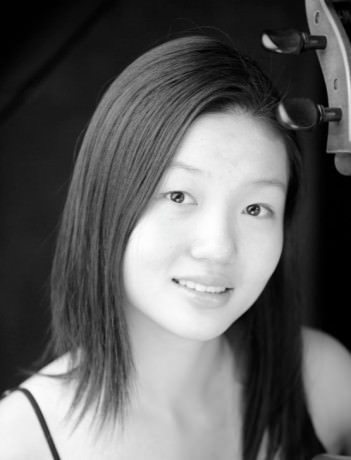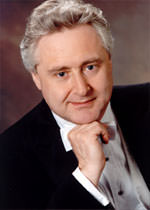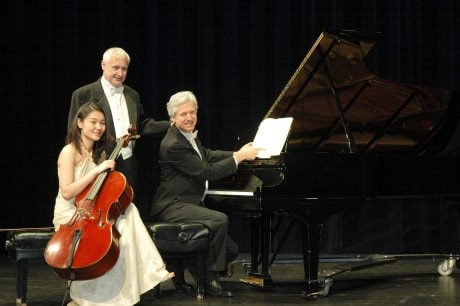Beethoven’s Symphony No. 9 may be based on the poem “Ode to Joy,” but that doesn’t mean the epic symphony holds a monopoly on joyous music.
If anything, the pieces accompanying Beethoven’s Ninth at the National Philharmonic’s 10th Anniversary Concert at The Music Center at Strathmore last Sunday afternoon were the ones that sent the celebratory sellout audience home in a buzz. At intermission I even heard people saying they wish the first half of the concert could be repeated instead of going onto Beethoven’s Ninth!

And with some good reason. Two soloists at completely different arcs of their careers, but both with magnetic connections to the audience, anchored the first half of the concert with virtuoso appearances as soloists with the National Philharmonic.
I’ve never seen anyone have so much fun playing the cello as 21-year-old Summer Hu with her performance of Tchaikovsky’s Variations on a Rococo Theme for Cello and Orchestra. The extensive piece, which in effect encompasses eight movements with a theme and seven variations, seems to call for every possible note that can be played on a cello and then some.
It bakes in waltzes, Rococo-style figurations, virtuoso runs up the top string, and gentle laments. Overall, though, the piece reflects a sunny attitude, and Ms. Hu practically acted out the entire composition, with her winning smile repeatedly flashing back and forth to conductor Piotr Gajewski, to the audience, and right into her cello, including in some wild passages where even veteran performers usually have to set their face in concentration.
Ms. Hu’s performance was not 100% note-perfect – with maybe a million notes in the thing I’m not sure it can be – but her interpretation was perfectly attuned to the event.
The ideal follow-up to this performance came with a veteran Washington pianist who is a special favorite with the crowd at Strathmore and many smaller concert venues throughout Maryland, Brian Ganz. With Frederic Chopin’s Introduction and Grande Polonaise Brillante, Mr. Ganz aimed straight at the heart of his repertoire, given that he is in a 10-year process of performing every note that Chopin ever wrote.
The Introduction part was a lyrical interlude very much in the mode of Chopin’s nocturnes and ballades, while the Grande Polonaise Brillante is exactly what it sounds like – a virtuoso piece for piano with lush orchestral background. Mr. Ganz dashed it off as if he were born to play it, which he practically was, given that only 18 hours earlier he had played an entire solo concert of Chopin’s music on the same stage.
The audience’s standing ovation for Mr. Ganz at this anniversary commemoration of The Music Center’s 2005 opening probably equally reflected his performance on that day as well as his past performances at Strathmore and, in a way, all those still to come.

After all the hullabaloo, the National Philharmonic’s hour-plus performance of Beethoven’s Ninth was something of a mixed bag. Comparisons with the Baltimore Symphony’s performance of the same piece on the same stage little more than a month earlier are hard to avoid.
Maestro Gajewski did a great job shaping the symphony’s sometimes amorphous first movement, which builds a mood and an attitude out of musical fragments that don’t completely add up to a melody but create tremendous anticipation for the drama to come. Variations in tempo and dynamics were masterfully led and performed.

Mr. Gajewski chose to take the opening of the second movement at a somewhat slower tempo than other conductors – certainly far slower than the almost dangerously fast opening pace taken by Nicholas McGegan with the BSO – to leave plenty of room to drive forward to the end. The orchestra just about stayed together when it was time to romp, although I had to hold my breath a couple of times. The lyrical third movement was competent if a bit sleepy at times.
The fourth and final movement – the one with which Beethoven’s Ninth is really identified for its use of vocal music – presented some challenges. For whatever reason, throughout the entire symphony the cello section was distinctly fainter than it should be (although all of its passages were well played). Many cello lines seemed to be evanescent in Strathmore’s very open acoustics until the point at which the National Philharmonic’s truly excellent viola section would join in, at which point those passages would “pop.”
The opening of the fourth movement, however, is based on a device – almost a Beethoven-esque joke – in which the cellos and basses without the violas play a line that is interrupted successively by the woodwinds trying to insert back themes from the first, second and third movements before being rudely overridden or “rejected” by the cellos and basses. This interplay came across as very academic and wandering among the orchestral sections with their unequal projection and without the usual sense of battle that leads to the epiphany of “Ode to Joy.”

Not long thereafter, though, the movement was redeemed by the appearance of four fine vocal soloists, including a welcome appearance by soprano and local favorite (and Vienna, Va. native) Danielle Talamantes, who had just opened a run of Carmen at the Metropolitan Opera the previous Friday evening and was about to return to New York to continue the Met run the next day.
The choral singing by the National Philharmonic Chorale created a fine sound but delivered nothing like the fantastic German diction (and thus a sense of specific meaning and purpose) produced by the Baltimore Choral Arts Society with the BSO last month. And who knows what impelled one or two of the chorus sopranos to stop paying attention to Mr. Gajewski’s cutoffs in the middle of “Ode to Joy” before getting back on track with the group.

Special credit for carrying off the flavor of the afternoon goes to National Philharmonic board chairman emeritus Todd Eskelsen, who opened the afternoon with a celebratory announcement and nicely brief fundraising pitch ladled with good humor. He joked that the “Voice of God” had not yet come on to demand that people turn off their cell phones and then gave instructions for people to text-message a donation pledge, adding: “And if you don’t know how to do that, ask your grandson sitting next to you to show you how.” Fantastic! It was also a sly allusion to the National Philharmonic’s “All Kids, All Free, All The Time” ticketing program sponsored by The Gazette newspaper and the Dieneke Johnson Fund.
Running Time: 2 hours and 30 minutes, with one 20-minute intermission.
The National Philharmonic’s 10th Anniversary Concert was performed on Sunday, February 8, 2015 at The Music Center at Strathmore – 5301 Tuckerman Lane, in North Bethesda, MD. For future National Philharmonic events at Strathmore, check their concert schedule. For all future Strathmore events, check their calendar of events.
RATING:




